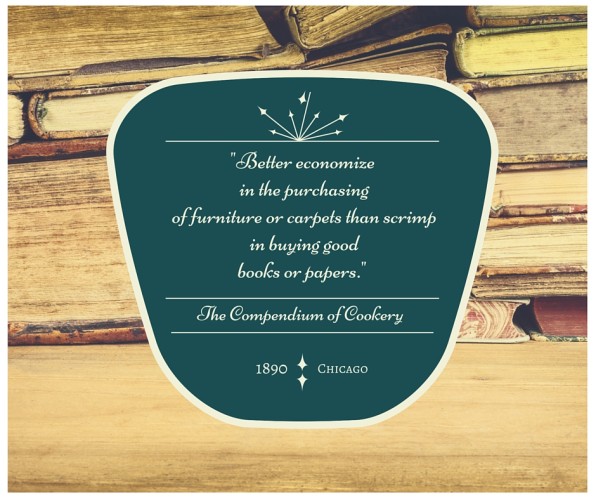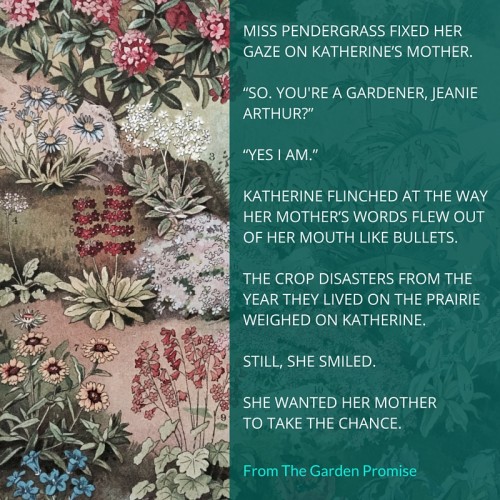CAUTION: STREAM-OF-CONSCIOUSNESS BELOW…
I’ve re-sorted the chapter notecards according to each character’s story and done the same with the hardcopy of the document as it stands right now… Next: on to creating three different computer files so that I can rewrite each book! Shouldn’t take too long. Most of it is written–just need to redo so that it all works across the books and within each book. 
Problems:
Book titles for each of the new books. I think I’ll keep Jeanie’s book as “The Garden Promise” and come up with new titles for Katherine’s book and Tommy’s book. For now, the 1905 thread will go into only Jeanie’s story because she is the bridge between both kids in these stories. And as of now I’m thinking her story should be last in this series of 3… Or not… Is it better to show Jeanie’s story first and then break out into Katherine’s and Tommy’s? So much to consider, but I’m so excited to have made this decision. One 800 page book would have been too unwieldy and not marketable. Each of these will be around 300 pages once I’m done… Since pulling each character’s story out of the big one and into his own book I feel like making each tale correct and compelling is doable.
The Truth Settles in…
Turpentine–For All Your Health Needs…
I’ve been entertaining swollen glands, a sore throat, rattling cough, fever, ear infection and laryngitis for almost a week now. Complete misery, as anyone knows and everyone forgets—me included—until waylaid.
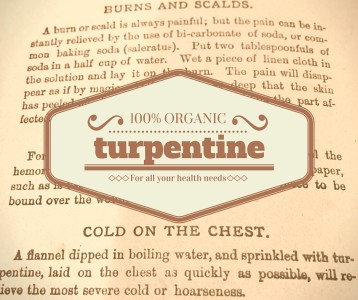 Luckily in 2015 we have antibiotics (I’m on my second, stronger prescription now) to help our bodies fight these germ wars. In writing The Garden Promise and reading all the family letters that help shape that novel, I know how often various members of the Arthur family fell ill. And this current illness reminded me how difficult it must have been to deal with sickness way back then.
Luckily in 2015 we have antibiotics (I’m on my second, stronger prescription now) to help our bodies fight these germ wars. In writing The Garden Promise and reading all the family letters that help shape that novel, I know how often various members of the Arthur family fell ill. And this current illness reminded me how difficult it must have been to deal with sickness way back then.
Nineteenth century sick-folks were limited in treatment choices, but they certainly tried hard. Here is an excerpt from a letter from Jeanie to her son, James, giving him the updates on his brother and sisters and a friend.
The nurse sent Dorothy home from school at noon today because her throat was sore. I gave her the turpentine and hot water cure. Hope it will help her. It cured Gale of sore throat in one night last week but he had a sore neck instead. Gretchen Rossiter has tuberculosis and the doctor has ordered her to Texas for the winter.
At first I thought Dorothy’s turpentine treatment was something she took by mouth. But the following recipes for soothing sore throats and treating a cold on the chest from The Compendium of Cookery illustrate something different:
The recipe for treating a Cold on the Chest suggests, “A flannel dipped in boiling water, sprinkled with turpentine, laid on chest as quickly as possible will relieve the most severe or hoarseness,” was probably what my great-great grandmother’s “cure,” was. It also explains how the cure could have made Gale’s sore throat disappear but also give him a sore neck. I imagine a towel dipped in boiling water and immediately applied to the throat would make anyone’s neck smart for a day or two.
I included the line about the Rossiter girl being ordered to Texas for the winter to deal with her TB because it just sounds funny the way it’s written. “Off to Texas with you!” as though sending someone to the corner store for lemons.
The cure for a sore throat in the Compendium orders: “Cut slices of salt pork or fat bacon; simmer a few moments in hot vinegar, and apply to throat as hot as possible. When this is taken off, as the throat is relieved, put around a bandage of soft flannel. A gargle of equal parts of borax and alum, dissolved in water, is also excellent. To be used frequently.”
In case you’re wondering—alum is “a colorless astringent compound that is a hydrated double sulfate of aluminum and potassium, used in solution medicinally and in dyeing and tanning.” And, borax is “a white mineral in some alkaline salt deposits, used in making glass and ceramics, as a metallurgical flux, and as an antiseptic.”
Yikes, okay, if desperate enough, I suppose one gargles with harsh chemicals. I sympathize with meds not working—I get it.
The honey, flaxseed, rock candy and lemon cure for a cold is not too bad, but still. When it comes to disease—2015 wins. Despite my repeated trips to the doctor for the right medicine to obliterate this mess of bacteria, I can say I appreciate it far more than a nice gargle of borax and alum.
The Right Words…
Hetty Morrison’s Very Bad Day…
It took me all day (minus time for a doctor appointment and travel to and from) to rewrite two chapters. These chapters are set in the kitchen (circa 1891) so I am doing round two of research making sure the flavor of the 19th century is evident in each scene.  As my kids started coming home from school and I realized the main portion of my writing day was over, I felt as though I didn’t get enough done. But then I considered Hettie Morrison’s lot in life. I don’t know the exact day or days or years that prompted her to say this, but I sure am glad I don’t live in 1878:
As my kids started coming home from school and I realized the main portion of my writing day was over, I felt as though I didn’t get enough done. But then I considered Hettie Morrison’s lot in life. I don’t know the exact day or days or years that prompted her to say this, but I sure am glad I don’t live in 1878:
“Not of my own free will did I enter upon a career of broiling, roasting, and baking… I wish to say that I think two-thirds of cook book makers should be hanged without benefit of clergy.” –Hetty Morrison–referenced in America’s Kitchens by Nancy Carlisle and Melinda Talbot Nasardinov.
For many people there is an air of romance about old-fashioned kitchens and life in the “good old days.” I see the allure of the “look” of something old, but quotes like Hetty’s and the list of “things to do” associated with making a hot cup of coffee each morning tamp down any notion that it was simpler “back then.” Bring on the Keurig or plop me down at Curbside Coffeehouse to write. Yes, that will do.
Inspiring the Writing Process
As I begin to work on The Garden Promise I put my mind in the mood for the 19th century American West, assisted by this drawing by Henri Boutet. Although the artist and his subjects were French, Boutet’s work helps me envision a time when people struggled to get by, but always found a bit of love and adventure along the way. 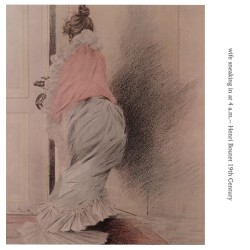 These French boudoir drawings pull back the portiere on the private lives of women (some scandalous, some not). Some of my characters in The Garden Promise would have been very interested in French fashion. Some would not have the time to consider fashion at all. Boutet’s sketches and etchings were hand-colored and thought to show that he had great tenderness for women and their lives–even the parts that were not typically on public display.
These French boudoir drawings pull back the portiere on the private lives of women (some scandalous, some not). Some of my characters in The Garden Promise would have been very interested in French fashion. Some would not have the time to consider fashion at all. Boutet’s sketches and etchings were hand-colored and thought to show that he had great tenderness for women and their lives–even the parts that were not typically on public display.
Mindful Writers Retreat… Spectacular in Every Way
A Look Back into The Last Letter…
When THE LAST LETTER launched in 2011 I was struck by two types of reactions from readers. One was that many people wanted to know more, they wanted to SEE more about how the Arthurs lived in the seventeen years between the two plotlines. 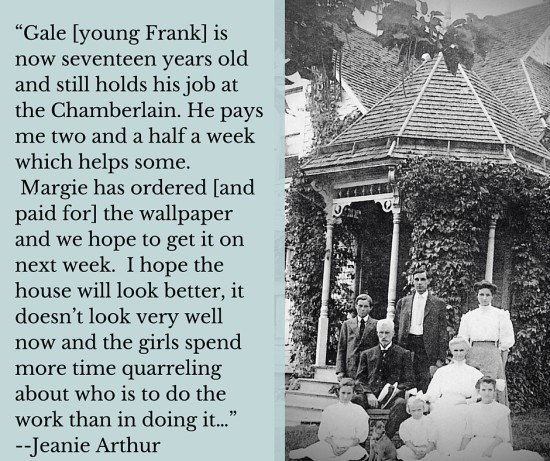 And the second bit of feedback I got from some very angry readers was that they could not believe that Jeanie Arthur had, nor would they, as mothers, EVER board their own children out like the main character did in the novel, like the real Jeanie Arthur (my great-great grandmother) did over one hundred years ago.
And the second bit of feedback I got from some very angry readers was that they could not believe that Jeanie Arthur had, nor would they, as mothers, EVER board their own children out like the main character did in the novel, like the real Jeanie Arthur (my great-great grandmother) did over one hundred years ago.
At first comments like this panicked me. Had I been sloppy with my research? Had I been too inventive in a genre that requires the author to be simultaneously creative and “stuck” to historical facts? But as I considered the response to this idea of boarding children out I decided, no. I have personal/familial/anecdotal evidence that mothers boarded children out so that they and the larger family would survive. And there are mountains of data that reveal that living at the turn of century required families and mothers to make decisions that we 21st century moms never would, that we would rarely be asked to.
The photo above shows my great-great grandmother and her six living children after her husband and their father left them—after they formally divorced. The man in the photo is Jeanie’s father. That home behind them was the center of their lives and Jeanie did everything she could to be sure that she kept that house in the family, stowing money away in banks where it would be safe from people who wanted to spend it for her. . . But keeping the house in the family meant all the children had to contribute financially. For the younger girls that meant they were often boarded at other homes. For the older children it meant they sent home money for the household. And, it often mean Jeanie took in boarders of all ages—infants to the elderly.
Like Jeanie Arthur the character, the real woman worked a multitude of jobs, scraping and scrapping together enough money to feed her children, pay for their school (yes, high school required payment in those days), and keep that house. Her letters to her son, James, are full of details related to the care and maintenance of this home, the problems with it, the endless race to secure enough in tax money that no one could take the property from her… Likewise, her letters show just one way parents thought of and discussed their offspring that was so very different, starkly so, than today (see above quote with the photo). The “quarreling daughters” stand the test of time, but we’ve certainly changed our perspective on what is required of kids today. Stay tuned for more on how divorce in early 20th century America shaped the way the Arthurs lived their lives.
And if you love fiction woven into your history, take a look at THE ROAD HOME (Book 2 in The Letter Series), a recent gold medal winner in the Readers’ Favorite Book Awards.

